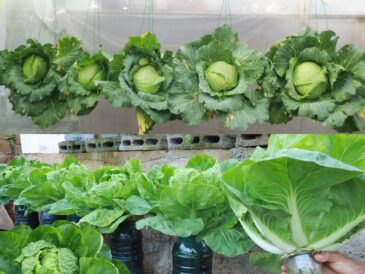Preparing a Plumptious Home:
- Sunshine and Space: Plums thrive in a location with at least 6-8 hours of direct sunlight daily. Ensure there’s ample space for the mature tree to spread its branches – most plum varieties reach 15-20 feet tall and wide.
- Soil Secrets: Plums prefer well-draining, fertile soil with a slightly acidic pH level (around 6.0-6.7). Conduct a soil test to determine your soil’s pH and amend it accordingly if needed. You can improve drainage by mixing compost or aged manure into the planting hole.
Planting Your Plum Tree:
- Dig a Spacious Hole: Dig a hole about 2-3 times wider than the root ball of your tree and just as deep. Loosen the soil at the bottom of the hole to encourage root growth.
- Positioning the Tree: Carefully place the tree in the hole, ensuring the root flare (the area where the trunk widens into the roots) is slightly above the soil level.
- Backfill and Water: Fill the hole back in with the amended soil, tamping it down gently to eliminate air pockets. Water the tree deeply to settle the soil and hydrate the roots.
Nurturing Your Plum Tree for Success:
- Watering: Water your newly planted tree regularly, especially during its first year. Aim to keep the soil consistently moist, but not soggy. As the tree matures, watering needs will decrease.
- Mulching: Apply a layer of organic mulch around the base of the tree, keeping it a few inches away from the trunk. Mulch helps retain moisture, suppress weeds, and regulate soil temperature.
- Organic Fertilization: Feed your plum tree with a balanced organic fertilizer every spring before new growth appears. You can also use composted manure or composted food scraps as a natural source of nutrients.
- Organic Pest Control: Monitor your tree for signs of pests or diseases and address them promptly using organic methods. Neem oil, insecticidal soap, and horticultural oils can be effective against common insect pests. For diseases, practices like good sanitation, removing infected leaves, and using copper fungicides can help.
- Pruning: Prune your plum tree lightly during the dormant season (late fall or early winter) to encourage healthy growth and fruit production. Focus on removing dead, diseased, or overcrowded branches.
Harvesting Your Sweet Rewards:
- Ripeness Rendezvous: The exact time to harvest your plums will depend on the variety. Generally, plums are ripe when they have a slight give when gently pressed and their color deepens to their mature hue. Taste a fruit to confirm its sweetness.
- Picking Perfection: Gently twist the ripe plums to remove them from the branch. Avoid pulling, as this can damage the tree.
With a little planning, dedication, and these organic practices, you’ll be well on your way to cultivating a flourishing plum tree that provides years of delicious, homegrown fruit!
Pages: 1 2




